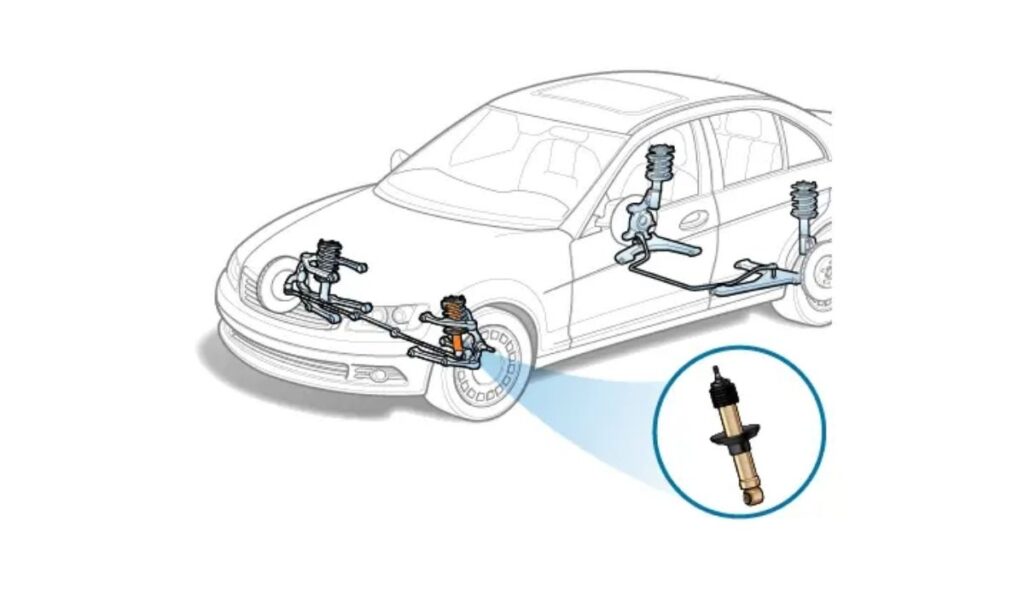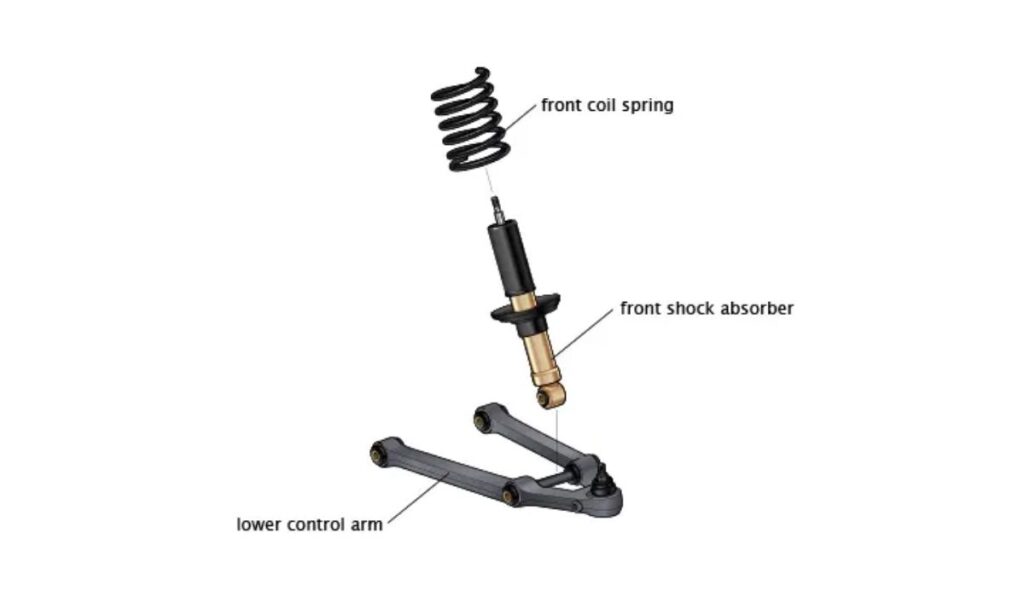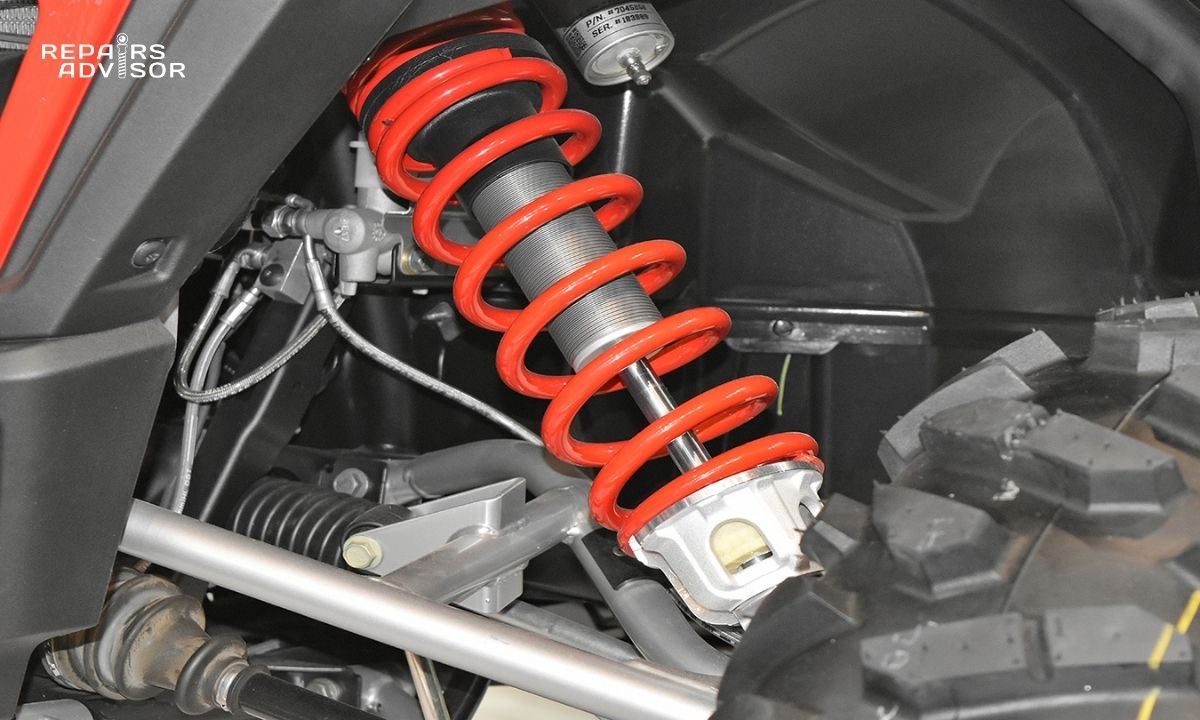Ever wonder what keeps your car from bouncing down the road like a pogo stick after hitting a bump? That’s the unsung hero: the shock absorber! These vital components of your suspension system are designed to dampen the shock and control the rebound of your springs when your vehicle drives over rough or uneven road surfaces. Without properly functioning shock absorbers, your ride would be incredibly bouncy, unstable, and even dangerous.
Shock absorbers work by converting the kinetic energy of suspension movement into heat, which then dissipates. They ensure your tires maintain consistent contact with the road, providing stability, comfort, and control. But like any hard-working part, they wear out over time. When they do, you’ll definitely feel (and hear) the difference!

How to Spot the Warning Signs of a Bad Front Shock Absorber
Catching a failing shock absorber early can significantly improve your driving experience and prevent further issues. Here are the key symptoms to watch out for:
- Vehicle Feels Unsettled or Floaty Over Bumps:
- If your car feels unusually “loose,” “floaty,” or “unsettled” after hitting a bump, as if it takes a moment to regain composure, your shocks might be losing their dampening ability. Instead of a controlled absorption, the car might feel disconnected from the road.
- Excessive Bouncing After a Bump:
- This is a classic symptom. After going over a bump or dip, if your vehicle continues to bounce excessively more than once or twice before settling, your shock absorbers are likely worn out. They’re no longer effectively controlling the spring’s rebound. You can often test this by pressing down hard on a corner of your car; if it bounces more than once after you release it, the shock is weak.
- Knocking Noises from the Suspension:
- Worn shock absorbers can lead to various noises. You might hear a knocking, clunking, or rattling sound coming from the front suspension, particularly when going over bumps or rough roads. This can be due to worn internal components of the shock, or worn mounting bushings allowing the shock to move improperly.
- Oil Leaking from the Shock Absorber:
- Take a visual look under your car. If you spot oil leaking or a greasy residue on the exterior of the shock absorber body, it’s a clear sign of a failed seal. Once the internal fluid (oil or gas) leaks out, the shock absorber loses its ability to dampen effectively.
- Worn or Damaged Shock Bushings:
- The shock absorber is mounted to your vehicle’s frame and suspension components with rubber or polyurethane bushings. If these bushings appear cracked, torn, or excessively worn, they won’t hold the shock securely, leading to play, noise, and reduced effectiveness of the shock itself.
- Uneven Tire Wear:
- While many suspension issues can cause uneven tire wear, worn shock absorbers can contribute significantly. When a shock can’t keep the tire firmly pressed against the road, the tire can “bounce” or “skip,” leading to choppy, cupped, or scalloped wear patterns across the tread. This indicates irregular contact with the road surface.

Front Shock Absorber Repair Advice (Always in Pairs!)
When your front shock absorbers fail, replacing them is the only solution. This is a job that often involves compressed springs (if part of a strut assembly) and requires specialized tools and expertise.
- Always Replace in Pairs:
- Shock absorbers (and struts) should ALWAYS be replaced in pairs, whether it’s the front pair or the rear pair. Even if only one shock appears to be faulty, the other shock on the same axle has experienced similar wear and will likely fail soon. Replacing them together ensures balanced dampening across the axle, maintaining consistent handling, stability, and braking performance.
- Consider Specialty Shocks (Air Bladders):
- It’s worth noting that some shock absorbers contain an air bladder. These can be used to adjust the vehicle’s ride height, either manually (via an air line connection) or automatically (as part of a self-leveling suspension system). If your vehicle has such a system and you notice height issues, the shock’s air bladder component might be the problem.
- Wheel Alignment May Be Necessary:
- While replacing just a shock absorber itself doesn’t always strictly require an alignment, if the shock is part of a strut assembly (which often involves disconnecting steering knuckles or other alignment-critical components), a wheel alignment should be performed after the replacement. This ensures your vehicle’s steering geometry is correct, preventing premature tire wear and ensuring safe handling. Your mechanic will advise based on your specific vehicle and the nature of the repair.
Your Repair Advisor’s Take:
Your front shock absorbers are fundamental to your car’s safety, comfort, and handling. They’re constantly working to keep your tires firmly on the ground and your ride smooth. Ignoring the signs of a bad shock—like excessive bouncing, strange noises, or fluid leaks—can lead to a significantly less safe and uncomfortable driving experience, and can even accelerate wear on other expensive suspension components.
Don’t put off getting your shocks checked! A failing shock absorber compromises your vehicle’s stability and braking performance.
For accurate diagnosis and safe replacement, always consult a qualified automotive mechanic. They have the specialized knowledge, tools, and experience to properly assess your shocks and ensure they are replaced correctly. Get back to a smooth, controlled ride – schedule a suspension inspection today!
